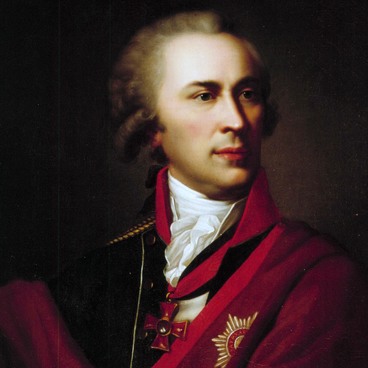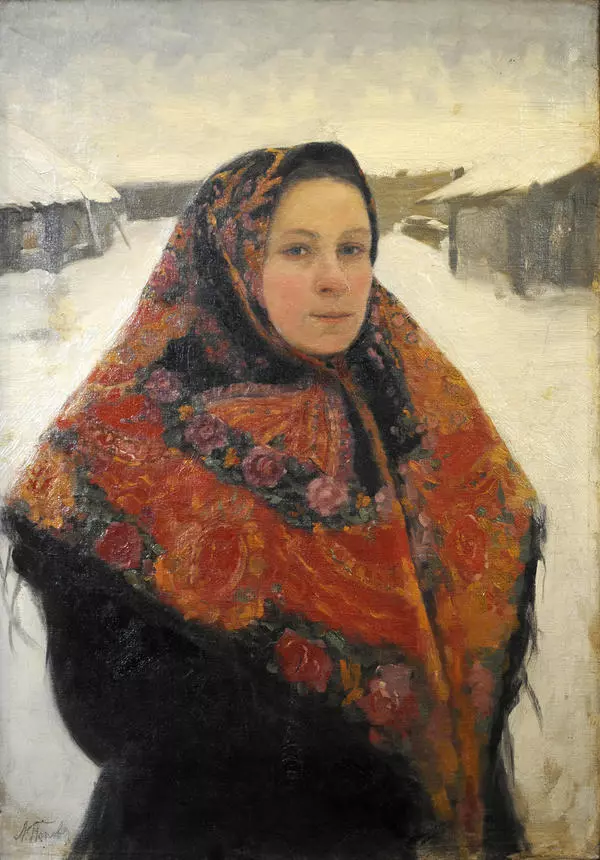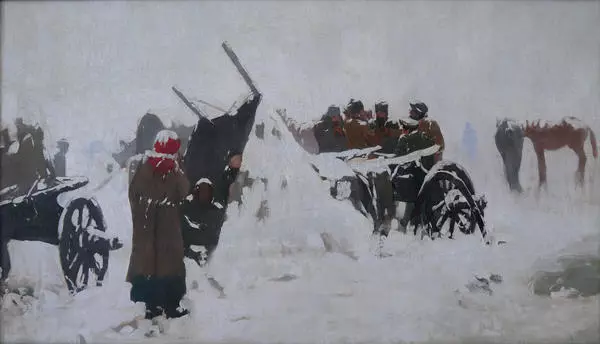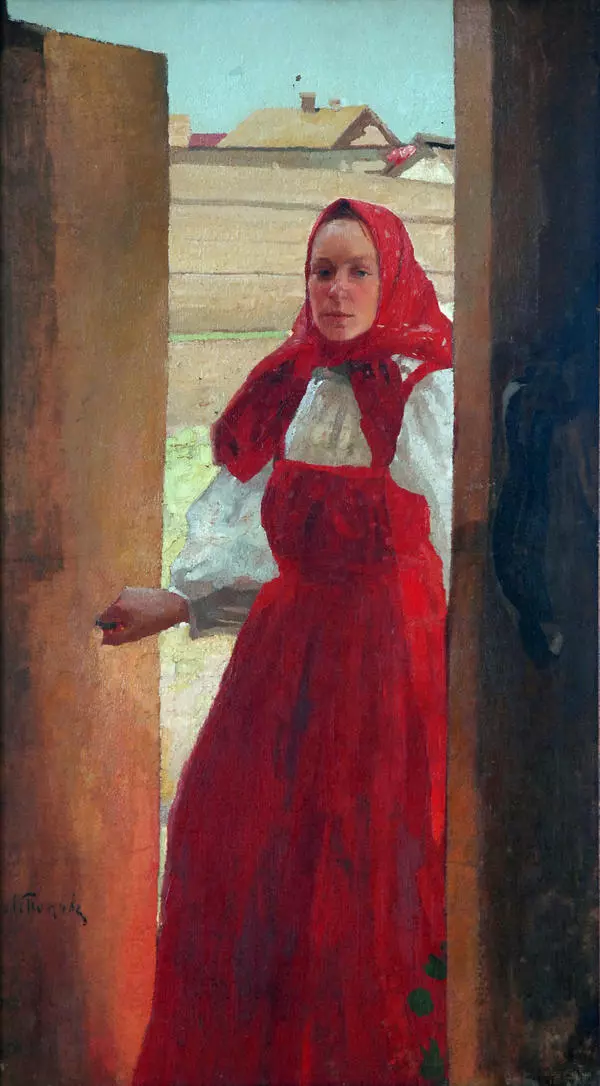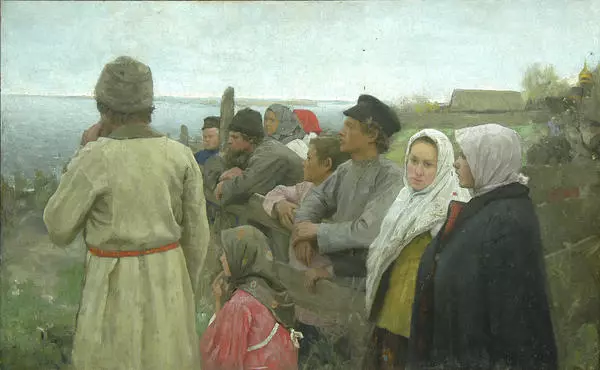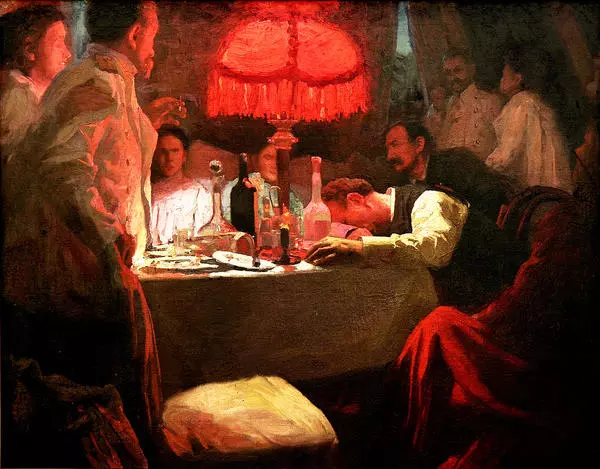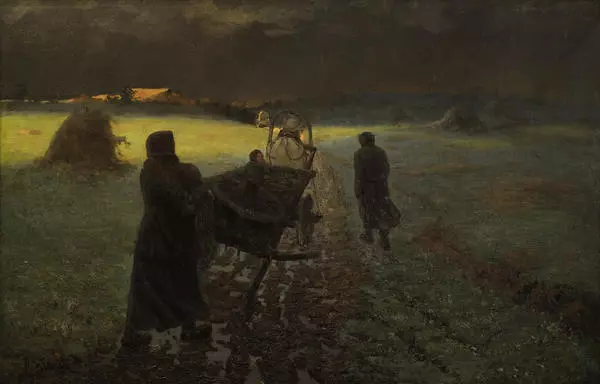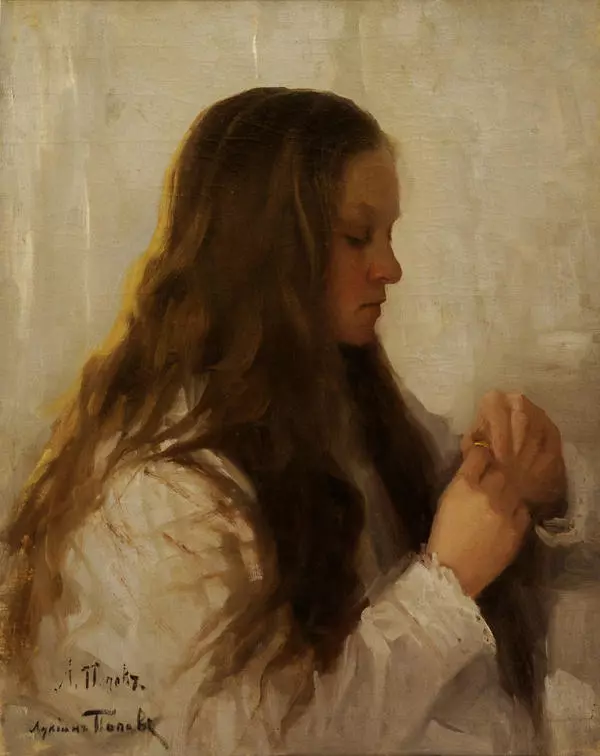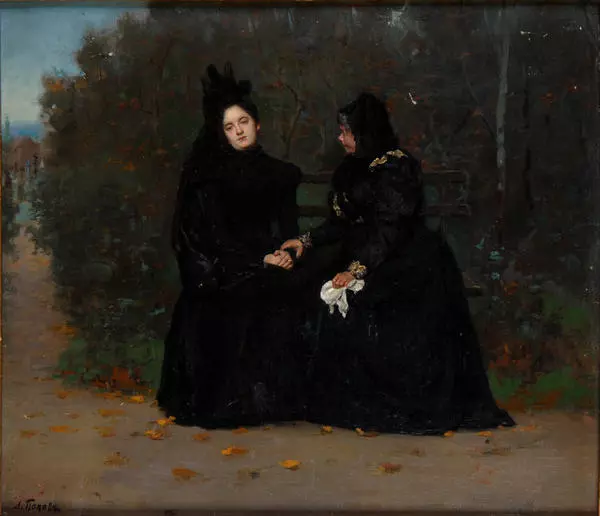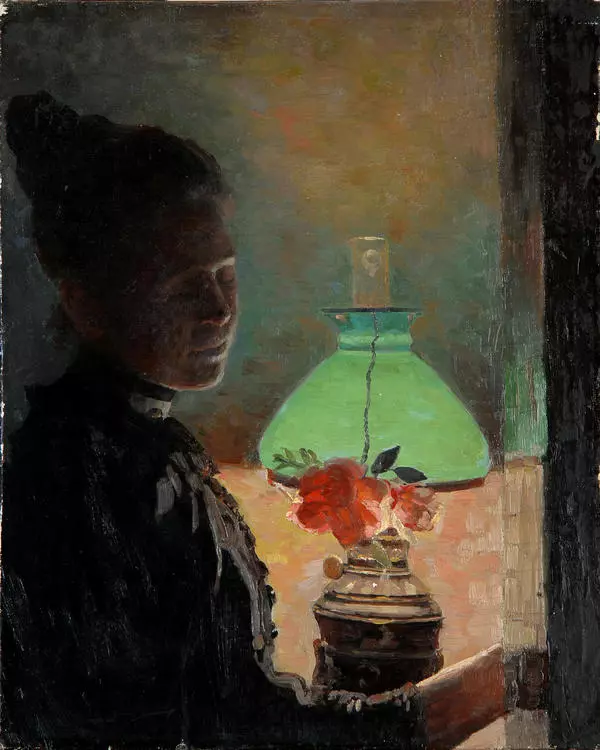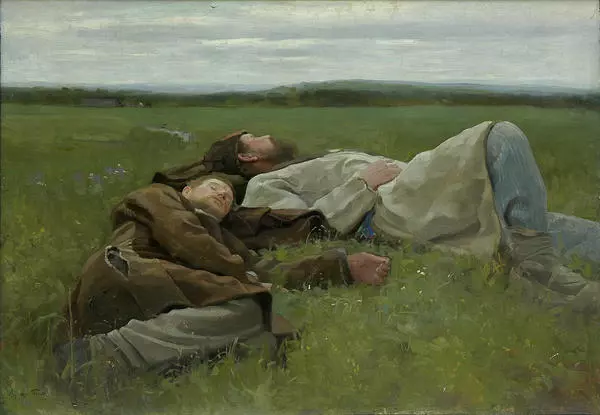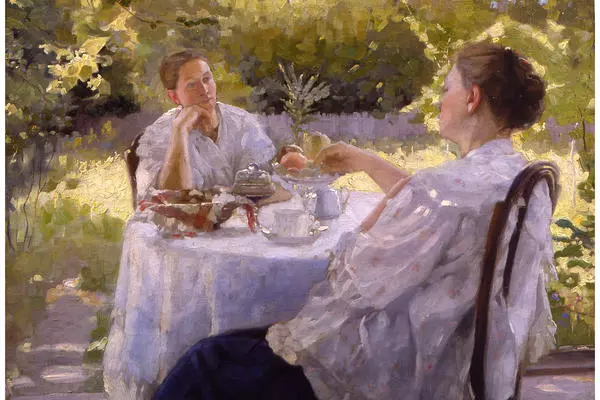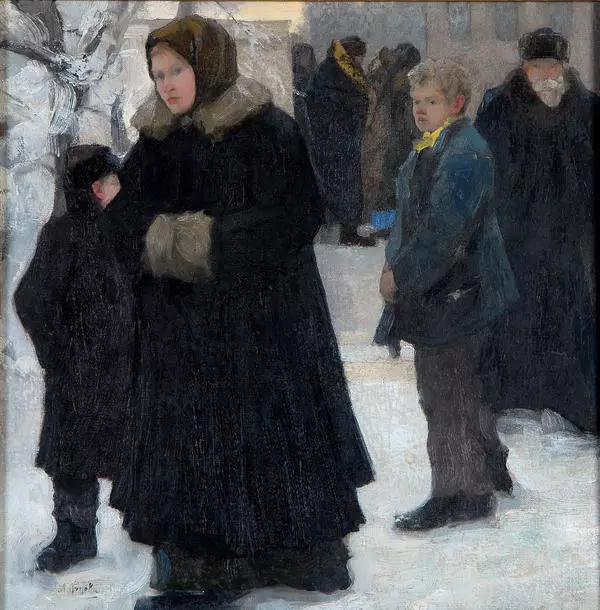Russian genre painter Lukian Popov was born in 1873 in a poor peasant family in a village outside of Orenburg. His childhood was hard: his father was enlisted into the army after the general conscription had been adopted. From an early age, Lukian had to work hard to help the family in some way. Despite everyday difficulties, he took an early interest in art and, at a later stage, independently left for St. Petersburg where he first entered the Drawing School at the Academy of Art, and in 1896 joined the Higher School of Art.
In 1902, upon graduation from the Academy, Popov was granted a title of artist and sponsored trips over Europe to get acquainted with art of Western Masters. Having returned to Russia, Popov elected to live in his native Orenburg. In his paintings he most often used folk subjects: the artist painted village life scenes, and in his pictures he reflected upon the destiny of Russian intellectuals at the turn of the 20th century. It is not by chance that as early as in 1900, during Popov’s Academy years, his works were exhibited at exhibitions of the Association of Itinerants, and in 1903 the artist was elected a full member of the Association.
Like other progressive-minded Itinerants, Popov paid special attention to acute social issues. In his 1903 work Where is the Truth? the painter showed a debate of intellectuals: this is a polemic of a young teacher and a civil servant; the discussion is followed by a middle-aged man and a high-school student who has just walked in, next to the entrance there is a grey-haired priest sitting with an air of detachment. The year of the painting suggests that the people are discussing the situation in Russia in the pre-revolutionary years: they are most likely arguing about faith, tight situation of population, the intellectual fermentation of the country, crisis of morals and imminent changes.
The painting does not allow to define Popov’s personal preferences: he paid almost equal attention to all the participants of the debate. Also, he used his favorite methods: he painted his characters’ faces in great detail, however pictured the figures in a brief and generalized way. Thus, the painter focused attention on the psychological meaning of the painting. In this context, the central debater is turning his back to the viewer: one can only guess of his feeling and statements judging by his faltering posture.
In 1902, upon graduation from the Academy, Popov was granted a title of artist and sponsored trips over Europe to get acquainted with art of Western Masters. Having returned to Russia, Popov elected to live in his native Orenburg. In his paintings he most often used folk subjects: the artist painted village life scenes, and in his pictures he reflected upon the destiny of Russian intellectuals at the turn of the 20th century. It is not by chance that as early as in 1900, during Popov’s Academy years, his works were exhibited at exhibitions of the Association of Itinerants, and in 1903 the artist was elected a full member of the Association.
Like other progressive-minded Itinerants, Popov paid special attention to acute social issues. In his 1903 work Where is the Truth? the painter showed a debate of intellectuals: this is a polemic of a young teacher and a civil servant; the discussion is followed by a middle-aged man and a high-school student who has just walked in, next to the entrance there is a grey-haired priest sitting with an air of detachment. The year of the painting suggests that the people are discussing the situation in Russia in the pre-revolutionary years: they are most likely arguing about faith, tight situation of population, the intellectual fermentation of the country, crisis of morals and imminent changes.
The painting does not allow to define Popov’s personal preferences: he paid almost equal attention to all the participants of the debate. Also, he used his favorite methods: he painted his characters’ faces in great detail, however pictured the figures in a brief and generalized way. Thus, the painter focused attention on the psychological meaning of the painting. In this context, the central debater is turning his back to the viewer: one can only guess of his feeling and statements judging by his faltering posture.
